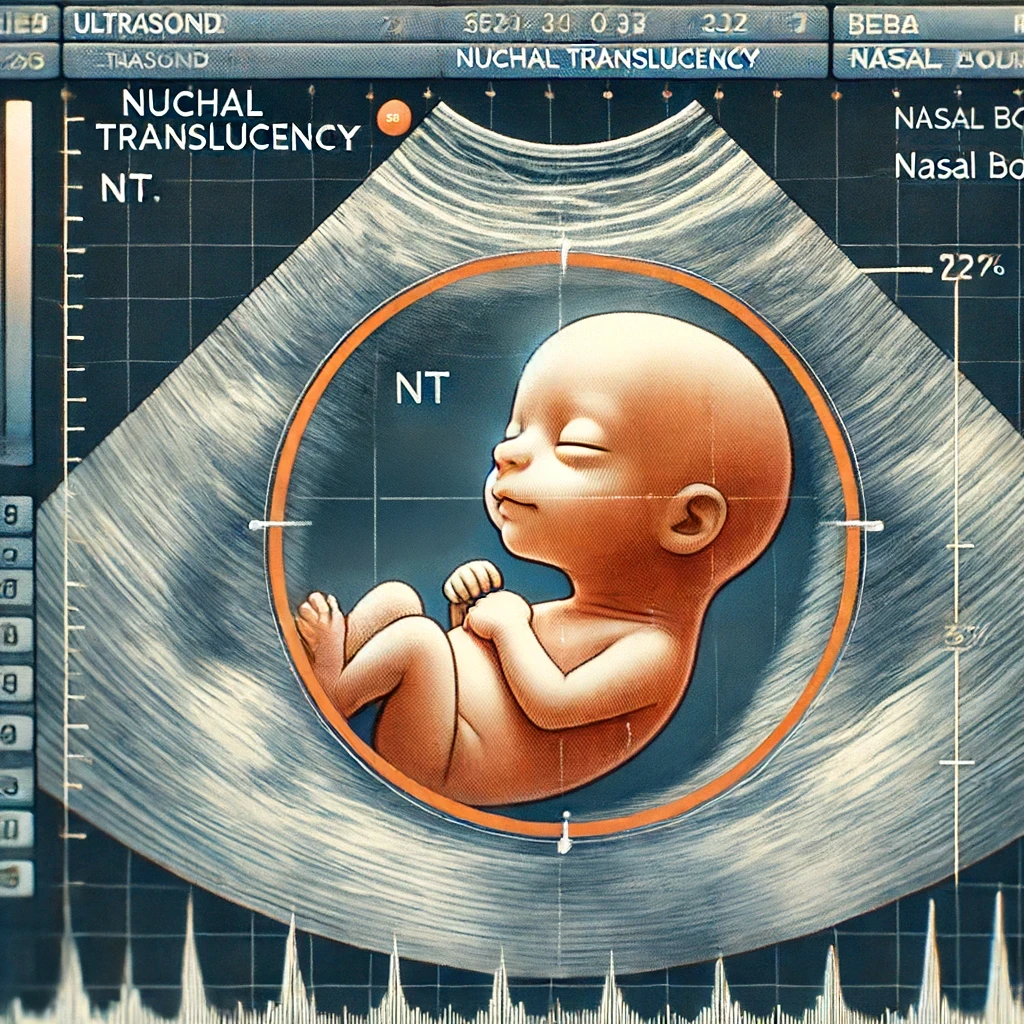What is a Nuchal Translucency Screening Test?
A Nuchal Translucency (NT) screening test is a special ultrasound done early in pregnancy. It helps check the risk of certain conditions in your baby, such as Down syndrome (Trisomy 21), Edwards syndrome (Trisomy 18), and Patau syndrome (Trisomy 13). It also helps assess the risk of pre-eclampsia, a condition that can cause high blood pressure during pregnancy.
How Do We Calculate the Risk for Pre-eclampsia?
At GXU Radiology Specialists, we use a method that looks at:
- Your medical history and personal characteristics
- The blood flow in an artery in your uterus
- Your blood pressure
- Levels of certain proteins in your blood (PLGF or PAPP-A)
This helps us predict the likelihood of pre-eclampsia, especially the kind that might occur early in pregnancy.


What Does a High-Risk Result Mean?
For Chromosomal Abnormalities:
- A high-risk result means there’s a higher chance your baby might have a chromosomal condition.
- We provide results for Down syndrome, Edwards syndrome, and Patau syndrome.
- The detection rate for these conditions is between 80-89%.
For Pre-eclampsia:
- A high-risk result indicates a higher likelihood of developing pre-eclampsia.
- If you get a high-risk result, you might be advised to take low-dose aspirin (150mg daily at night) from before 16 weeks until 36 weeks of pregnancy. This can help reduce the risk of developing pre-eclampsia by at least 60%.
When Should You Have the Ultrasound?
The best time for the NT scan is around 13 weeks of pregnancy, but it can be done anytime between 12 weeks and 13 weeks and 6 days. Doing the scan earlier might mean we need to repeat it to get clearer images

Referral Options for Nuchal Translucency Scan
At GXU Radiology Specialists, we offer four different service options for the NT scan. Patients receive a Medicare rebate for this ultrasound and will incur varying out-of-pocket costs based on the chosen service. All options include an early anatomical survey.
If the patient is undergoing NIPT:
Combined Pre-eclampsia Screening
- Request serum PLGF to be performed at or after 11 weeks’ gestation (the PLGF cannot be used if taken before 11 weeks).
Early Anatomy Ultrasound
- Structural ultrasound at 12-13 weeks’ gestation.
If the patient is not undergoing NIPT:
Combined First Trimester Chromosomal and Pre-eclampsia (PE) Screening
- Request serum beta-hCG, PAPP-A, and PLGF to be performed at or after 11 weeks’ gestation, up to 13 weeks and 6 days. The PE screening calculation can be performed with PAPP-A rather than PLGF for a slight reduction in sensitivity.
Combined First Trimester Chromosomal Screening
- Request serum beta-hCG and PAPP-A. This is best done three days before the NT scan, though up to seven days is acceptable. Blood samples taken after 13 weeks and 6 days cannot be used for the risk calculation.
Want to book ?
We have a team of highly experienced sonographers ready to care for you and your baby. Click the button below to use our automated booking service.
Or Call 02 4999 6499 and one of our friendly reception staff will arrange your booking.
References
- Rolnik, DL et al. ASPRE trial: performance of screening for preterm pre-eclampsia. UOG 2017; 50: 492-495
- Guy, GP et al. Implementation of routine first trimester combined screening for pre-eclampsia: a clinical effectiveness study. BJOG 2021; 128:149-156
- Park, FJ et al. Clinical evaluation of a first trimester algorithm predicting the risk of hypertensive disease of pregnancy. 2013; 53: 532-539
- Rolnik, DL et al. Aspirin vs Placebo in Pregnancies at High Risk of Preterm Preeclampsia. NEJM 2017; 377:613-22



